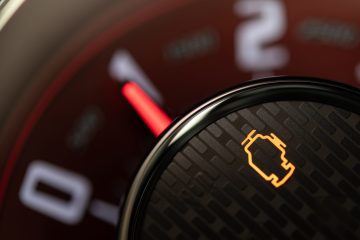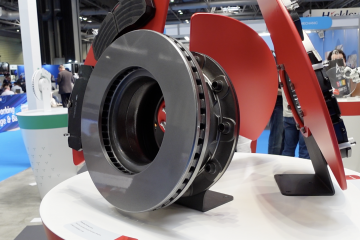A ruling from the Advertising Standards Authority (ASA) over comments made in an online advert for Hyundai’s hydrogen models has again highlighted the impact of particulates from vehicle brakes and tyres.
The Korean carmaker had claimed that it’s all new hydrogen-based NEXO was “A car so beautifully clean, it purifies the air as it goes”. The carmaker highlighted that a clean air supply, free of particulate matter, was crucial to provide the on-board fuel-cell with the required oxygen that could mix with hydrogen fuel, creating electricity.
The NEXO contains an air-supply system to manage and clean the air coming into the vehicle, with filters removing 97% of fine duct and gases. This purified air is then expelled from the system, which Hyundai claimed what they meant with their comments.
Particulate future
The ASA considered that the claim “A car so beautifully clean, it purifies the air as it goes” would be understood to mean that the car overall had negligible environmental impact and would remove impurities from the air as it was driven, such that no impurities caused by driving it would remain in the air.
The complainant to the ASA had raised concerns because they understood that, although the car would not release exhaust fumes like a traditional combustion engine, it would still release particulates as a result of brake and tyre wear. Hyundai confirmed its vehicle would still emit these particles.
As the NEXO did not capture its own brake and tyre particulates, the ASA upheld the complaint and orderd Hyundai to remove the comments from its website.
While the issue may seem trivial, the issue highlights that concern over vehicles emitting particulate matter will not be solved by the move to electric and hydrogen vehicles. Instead, attention will focus away from the fuel emissions and instead focus on brakes and tyres, together with other road matter.
A study published by the government’s Air Quality Expert Group in 2019 said particles from brake wear, tyre wear and road surface wear directly contribute to well over half of particle pollution from road transport.
“No legislation is currently in place specifically to limit or reduce [these] particles,” the group warned. “So, while legislation has driven down emissions of particles from exhausts, the non-exhaust proportion of road traffic emissions has increased.”
Pressure is likely to continue to be placed upon aftermarket companies to use materials that create less harmful particulates, while standards could also be tightened to prevent any cheap import parts from being used on vehicles in the future. One thing is certain, the issue of particulates is one that will not go away for some time.



